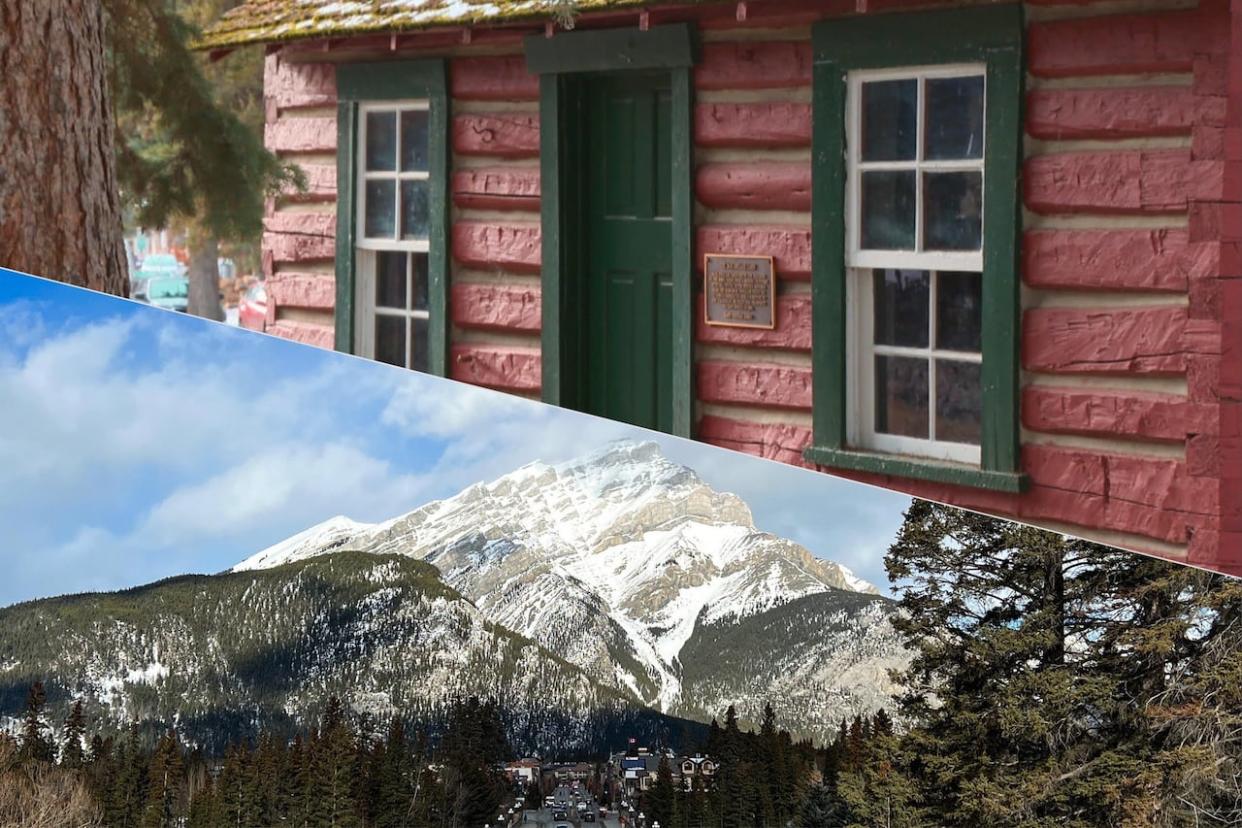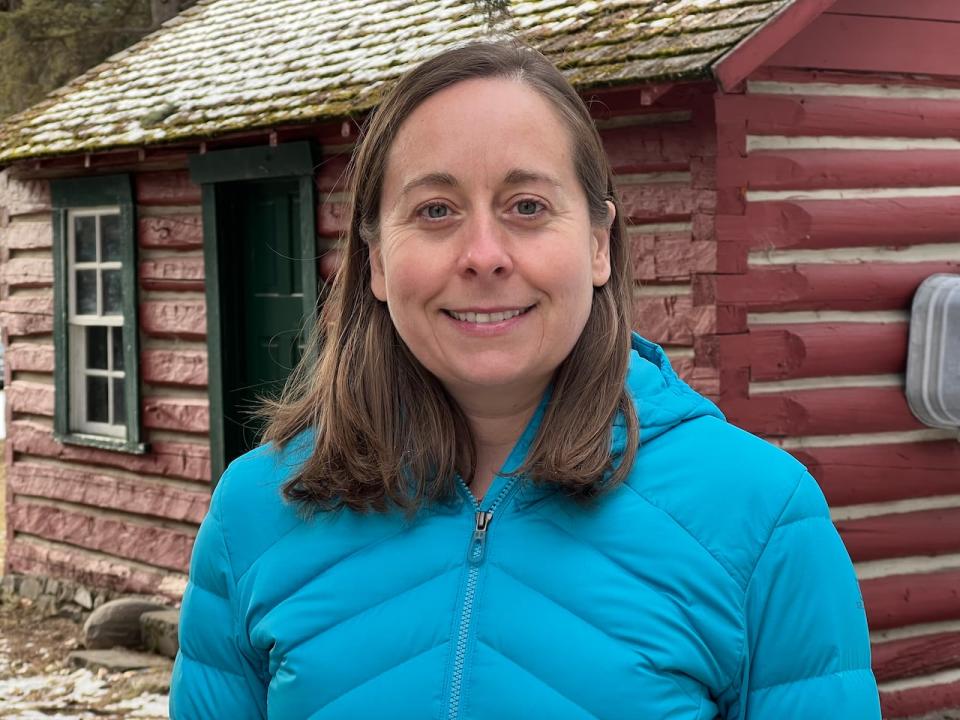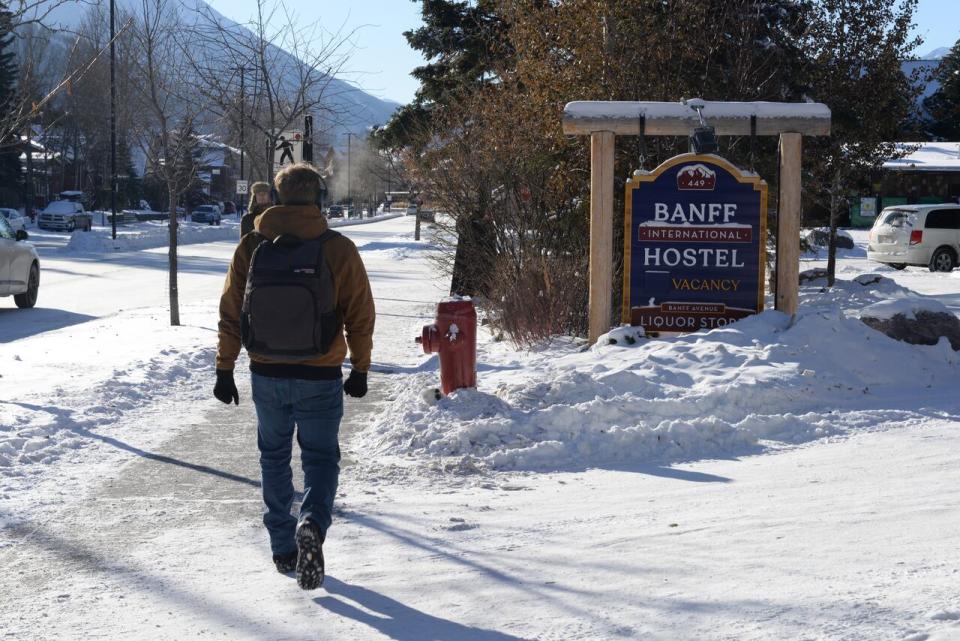Banff's historic backyard cabins have renewed relevance amid housing crunch

Travel back in time, and Banff residents were making housing work for them by building backyard cabins — even if they weren't legal — for workers and tourists.
Today, Ottawa is looking for such creative solutions and more as it challenges municipalities to come up with ways to tackle the country's housing crisis — and Banff's plans might bring back that now lost gentle density as part of the fix.
The municipality sits on a fixed land base, with no space for suburbs to sprawl, and the development of new housing has plateaued.
Almost all residential land, 98.5 per cent, is already developed. But officials say the town has a 700- to 1,000-unit housing shortage it wants to make up.
"It's really about trying to incentivize people to make the most of their properties," Dave Michaels said.
There's money on the table from the federal government, thanks to the housing accelerator fund. Banff has a proposal in the works.
The town is looking at a whole suite of options. Michaels said they have proposed financial incentives and tactics to tax vacant or underdeveloped land and want to ease some planning requirements.
"All options are on the table," Michaels said. "There's a lot of changes that we really think will incentivize a lot of development that's kind of waiting in the wings that hasn't been possible with the increases to construction costs."
Among the ideas under consideration are eliminating parking minimums, bumping up building height maximums, and allowing accessory dwellings, such as secondary and backyard suites.

Banff's manager of Planning Services, Dave Michaels said to spur new housing development officials want to create incentives and ease some development rules. (Helen Pike/CBC)
Accessory dwellings are a fitting call to the past.
In the 1930s, Banff was a town of so-called gentle density — officials did a survey and found 400 cabins and tent houses in backyards.
Today, that would make up about 10 per cent of the town's housing, estimated Kathleen Gallagher, a development planner with the town.
The number is even more interesting in today's context because, if all of the town's measures are approved by council, and Parks Canada next year, Gallagher said they hope to spur the development of 400 to 500 new units three years after the new policy and incentives come into effect.
"I think it's neat that we're seeing this same story play out and the same type of solutions," Gallagher said.

Kathleen Gallagher is a development planner with the Town of Banff. (Helen Pike/CBC)
That same story: workers need a place to live in the tourist town and the housing currently available just isn't enough.
A shack in Banff may sound romantic, even cute — but after years without much regulation or oversight, the town became littered with them. An Order in Council from 1932 described the homes as unsanitary, dilapidated, and a blemish on the townsite.
It wasn't the vibe Ottawa wanted for its first national park. Canvas didn't evoke "Crown Jewel."
"They wanted to look good for the highbrow tourists," Gallagher said. "Just not wanting the backyard cabins to be a blight on the town."
Letters back and forth, between Ottawa and Banff officials outline the struggle between the federal government's rules and wishes, and the reality for some tenants.
In one correspondence, then-superintendent P.J. Jennings writes about a man living in a cabin illegally through winter who couldn't afford a house, or even a room — he had nowhere to go and refused to move.
"Housing was expensive and limited, and people needed to come here and work," Gallagher said.
Of course, those little cabins aren't as plentiful today. In 2017 the town survey found only 45 of the relics. Many didn't meet standards when the time came to comply with development rules in the 1930s.
Many more fell victim to much-needed density. A bigger project with more units had more value to land owners in many cases.

Housing has always been an issue in the Bow Valley, but pandemic impacts have chagned the landscape. (Helen Pike/CBC)
But the idea and spirit of a backyard cabin is again relevant today.
There are secondary suites and accessory dwellings in town, but Michaels thinks the town could benefit from more.
"We have a large number of properties that don't have accessory suites or secondary dwellings that really could benefit both the property, the individual property owners," Michaels said. "Provide them extra income, as well as allow that incremental housing through our community."
These discussions will continue into 2024, with public consultation and any land-use bylaw changes coming to the town council floor for consideration.

